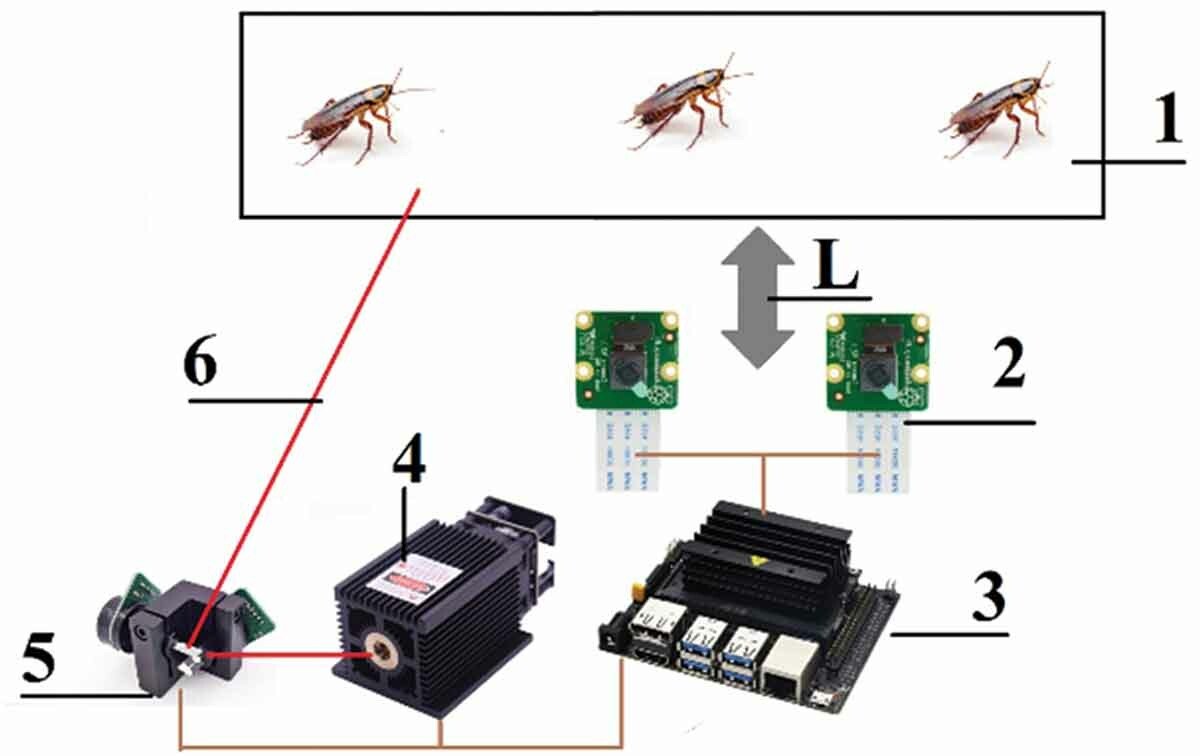A new paper recently revealed that an artificial intelligence-driven laser that can identify and zap cockroaches has been developed.
According to a paper published on September 21 in the journal Oriental Insects, this laser marks a new method of pest control, with the ability to kill individual bugs from a distance of up to four feet away without the use of harmful pesticides.
"In this study, we present a laser system automated by machine vision for neutralizing and influencing the behavior of insect pests, '' wrote the authors. "By performing experiments on domiciliary cockroaches, Blattella germanica, we demonstrate that our approach enables the immediate and selective neutralization of individual insects at a distance up to 1.2 m [4 feet]."
Cockroaches are a major pest around the world, eating and contaminating human and animal food, and crops, as well as leaving an unpleasant smell in homes. According to 2021 U.S. Census data, 14 million of the approximately 124 million occupied housing units in the U.S. reported seeing cockroaches in their living space in the previous year.

"Pest control is a major issue for the food industry and public health. Current agrochemical practices for controlling harmful insects are generally problematic because they lead to resistance and often impact non-targeted species," wrote paper's authors.
Methods of controlling a cockroach infestation include using poisoned bait containing hydramethylnon or fipronil and boric acid powder, as well as insecticides containing deltamethrin or pyrethrin. However, these methods are harmful to pets and humans and pollinating insects such as bees. Cockroaches may even develop a resistance to the chemicals over time.
Therefore, this pest control laser may be a method of controlling cockroach infestations in the future without the use of harmful chemicals. This is an especially pressing issue in the coming years with the encroaching effects of climate change, as it is expected that due to global temperature increase and resultant changing population dynamics, pests will become a much larger problem, especially in agriculture.
The hotter temperatures may increase the physiological activity and metabolic rate of insects, causing pests to devour more crops. Additionally, the altered climate will result in the distribution ranges of both the crops and pests changing to places that may not have their usual predators, leading to a population boom.
The authors hope that their laser pest elimination system could represent a way forward in terms of eliminating insects without killing important species too.
"Parameters of our prototype system can readily be tuned for applications in various situations and on different pest species like mosquitoes, locusts, and caterpillars. The prospect of this study is to pursue the creation of a standalone, safe for the environment, compact, low-cost, and energy-efficient device system for pest control," the authors wrote.
The device itself works using artificial intelligence, or AI, to detect and recognize the cockroach using a camera, before firing a laser at it, killing it. The researchers trained the AI to know what a cockroach looked like in a variety of light conditions and positions.

"We used 1,000 images that were prepared with different lighting to make the research more effective at any time of the day," wrote the authors.
This pest control method does have its drawbacks and dangers, however, due to the use of a laser powerful enough to kill the insect.
"It is very important to note that the usage of this device must be restricted to areas where the possibility of the laser beam hitting another non-targeted living specimen is minimized," the authors wrote. "The aim of this work is to demonstrate the feasibility of using a laser to control insect pests, but we also understand that there exist safety issues of using lasers in insect control processes and they would require further study."
Laser beams can seriously damage eyes, which means if this device were being used in a home, it would be dangerous to adults, children and pets alike.
"It's not recommended because it's a little dangerous," Ildar Rakhmatulin, a research associate at Heriot-Watt University and lead author of the paper, told Vice. "Lasers can damage not only cockroaches but your eyes."
Lasers can damage the cornea, lens, or retina, depending on the wavelength, by burning the tissue. As the authors explain in the paper, a laser can also enter a blood vessel and clog it, or even hit a spot where nerves from all over the eye go to the brain.
Uncommon Knowledge
Newsweek is committed to challenging conventional wisdom and finding connections in the search for common ground.
Newsweek is committed to challenging conventional wisdom and finding connections in the search for common ground.
About the writer
Jess Thomson is a Newsweek Science Reporter based in London UK. Her focus is reporting on science, technology and healthcare. ... Read more
To read how Newsweek uses AI as a newsroom tool, Click here.






